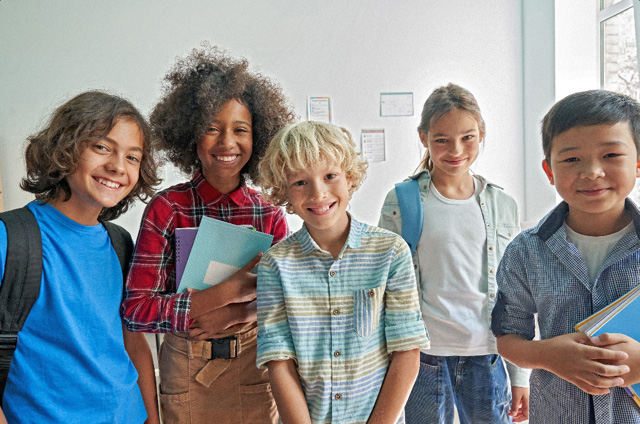What should teachers understand to facilitate success for all students?
Page 4: Cultural Considerations
 When we use the word culture, we are generally referring to the beliefs, values, customs, and social behaviors of a group that are reflected in their everyday life. Cultural norms are learned as they are passed down from one generation to the next. Though culture can be tied to specific racial or ethnic groups, it can also encompass broader groups of people. Think about the term Southern. It encompasses and reflects something about Southern culture that is very different from that of the North or Southwest. And though many cultures share particular attributes and values, it is important to remember that major differences exist between and within them. As previously mentioned, there are over 1,000 different cultures represented in our schools today. Consequently, teachers will have students who display different ways of learning, behaving, communicating, and interacting with others.
When we use the word culture, we are generally referring to the beliefs, values, customs, and social behaviors of a group that are reflected in their everyday life. Cultural norms are learned as they are passed down from one generation to the next. Though culture can be tied to specific racial or ethnic groups, it can also encompass broader groups of people. Think about the term Southern. It encompasses and reflects something about Southern culture that is very different from that of the North or Southwest. And though many cultures share particular attributes and values, it is important to remember that major differences exist between and within them. As previously mentioned, there are over 1,000 different cultures represented in our schools today. Consequently, teachers will have students who display different ways of learning, behaving, communicating, and interacting with others.
Research Shows
- The face of America’s teachers remains homogeneous, even as the heterogeneity of students continues to grow. As of 2020, 80% of the teaching force was White, whereas 54% of students were from non-White backgrounds
(U.S. Department of Education, 2024) - During the 2020–2021 school year, students of color made up more than half of the student population in 21 states and the District of Columbia
(U.S. Department of Education, 2022)
Why Culture Matters
Because culturally based behaviors are so ingrained, educators often don’t realize that tone of voice, facial expressions, and body language can vary across cultures. Consider the story of seven-year-old Amelia. Not long after she’d moved to a new school, the principal called her parents to complain about her behavior: she continued to address her teacher as ma’am (something the teacher was uncomfortable with) even after being told not to. As you might have guessed, in Amelia’s culture, this was the expected appropriate behavior and an ingrained reflexive response that was difficult for her to stop. Further, Amelia knew she would get in trouble at home if she did not address female authority figures in this manner. From the teacher’s point of view, however, Amelia’s behavior appeared patronizing and disrespectful, especially after she’d been told to stop. And this was just one brief interaction. Imagine the potential for other culturally based conflicts—known as cross-cultural dissonance or cultural discontinuity—that Amelia might experience throughout the course of a day, much less an entire school year. These types of interactions can reduce student motivation and compromise educational outcomes.
Cross-cultural dissonance can also occur when instructional methods used in school differ from what students might be used to. For example, in some cultures children are expected to observe quietly and then imitate adult activities. In others, adults spend a great deal of time talking to and questioning children. Yet in others, students are expected to be inquisitive and ask lots of questions. When these types of learning behaviors conflict with the teacher’s expectations, the teacher might mistakenly believe that the student is inattentive, lazy, or defiant. Similarly, when the teacher’s instructional behaviors conflict with the student’s expectations, the student might perceive the teacher as being unfair, uncaring, intimidating, or insensitive. Consider the example below.
| Teacher Behavior | Student Behavior | Misperception | Reality |
| Because Marcos appears to be struggling in math, his teacher tells him to ask for help if he doesn’t understand something. | Marcos does not ask for help and gets 54% on his assignment. | The teacher thinks Marcos is lazy and doesn’t want to ask for help. | In Marcos’s culture, asking for help implies that the teacher did not explain the topic well. He does not ask for help because he does not want to insult her. |
| The next day, Marcos’s teacher decides to work with him despite his “refusal” to ask for help. She calls his name, beckoning with one finger for him to come to her desk. | Marcos looks ashamed as he approaches her desk. As they work together, he seems to become frustrated and gives only curt answers. Frustrated, the teacher finally sends him back to his desk. | The teacher thinks Marcos does not want to work with her, reinforcing her perception of his laziness. | In Marcos’s culture, beckoning with one finger is an obscene gesture. He is deeply hurt that his teacher would behave this way toward him, and he is embarrassed and angry that she would do so in front of everyone. |
After one brief interaction, the teacher already has a negative perception of Marcos. Her misperception is reinforced after the second interaction. But Marcos, who was only trying to be polite, ends up feeling insulted and humiliated.
For Your Information
- Teachers who don’t recognize different communication styles might consider interactive styles of communication (e.g., pronounced body gestures, rapidly paced rhythmic speech), to be rude and disruptive, requiring disciplinary action.
- Teachers who consider their way of speaking English to be more correct than the way their students speak (e.g., due to their dialect) might hold inaccurate beliefs about their intelligence and abilities.
What Educators Can Do
Students from different cultural backgrounds bring their own knowledge and life experiences to the academic setting. When educators learn about their students’ backgrounds and personal experiences, they have the potential to change how they provide instruction. Further, educators who understand their students can use this information to help select instructional methods that meet their students’ needs and to make learning connections between what is being taught and the students’ experiences.
Educators should take the time to learn more about the backgrounds, values, histories, practices, and traditions of their students and their families. They can do this by talking with their students and their families, reading cultural biographies or histories, or attending a professional development workshop. By learning more about their students’ cultures, educators can begin to recognize that some of their students experience the world in different ways.
Educators can incorporate students’ cultural knowledge, experiences, and interests into lessons. Some ways educators can do this include:
Did You Know?
Students might have different cultural values, beliefs, and ways of interacting than their parents and grandparents. By getting to know the students and their families, teachers are more likely to facilitate communication and create positive relationships. Additionally, educators should be careful not to make assumptions or generalizations based on cultural stereotypes. A number of factors have an effect on a family’s beliefs and how they live, including the length of time they have been in the country, their level of acculturation, socioeconomic status, educational background, and reason(s) for immigration, among others.
- Acknowledging and respecting different cultural heritages
- Teaching students to understand and appreciate their own cultural heritage and those of others
- Recognizing the strengths and contributions of individuals from historically underrepresented groups
- Activating students’ prior knowledge and connecting what they know to what they are learning
- Using a variety of instructional techniques (e.g., role-playing exercises, storytelling) that align with how the students are taught in their own culture
- Using a number of sources alongside textbooks to provide curriculum content
- Incorporating multicultural knowledge, resources, and materials in all subjects to ensure that multiple perspectives are represented
Effective educators also recognize that some students organize their ideas differently than those who are more familiar with the dominant cultural style. For example, students may use a circular communication style that omits explanations about the relationships between topics. For educators more accustomed to a straightforward, linear style of communication, it might sound as though the speaker is rambling and failing to complete their thoughts or is unable to think logically.
Alfredo Artiles discusses the importance of recognizing and valuing different storytelling styles (time: 1:34).
Alfredo Artiles, PhD
Professor, Division of Curriculum & Instruction
University of Arizona

Transcript: Alfredo Artiles, PhD
There are some really interesting studies showing that kids who might bring a very different tradition in telling stories—for example, an African American boy who is starting to say a story about what they did this weekend and begins to move off that main topic to engage in subtopics as he is describing that whole activity—might be regarded as being a little more scattered, distractible, not well organized in his thinking, whereas a white, middle-class student who might be narrating a very linear story—with a beginning, a middle part, and an end—might be regarded as being more competent in his thinking and linguistic practices. When, in reality, when you look at cultural practices in the African American household of this child, it might be very much commonplace to describe stories that have multiple plots that are unfolding at the same time, and what he’s doing is very much consistent with what he’s been exposed to. So when it comes to designing instruction, you need to take into account those very complex layers that I’m describing—not only what experiences these students have had with certain ways of engaging with language, with thinking, with memory, with all the kinds of areas of cognitive functioning but also how we are setting up conditions for students in the classroom to show what they know and can do. To what extent what they are doing in the classroom is in part shaped by the way we’re setting up things.